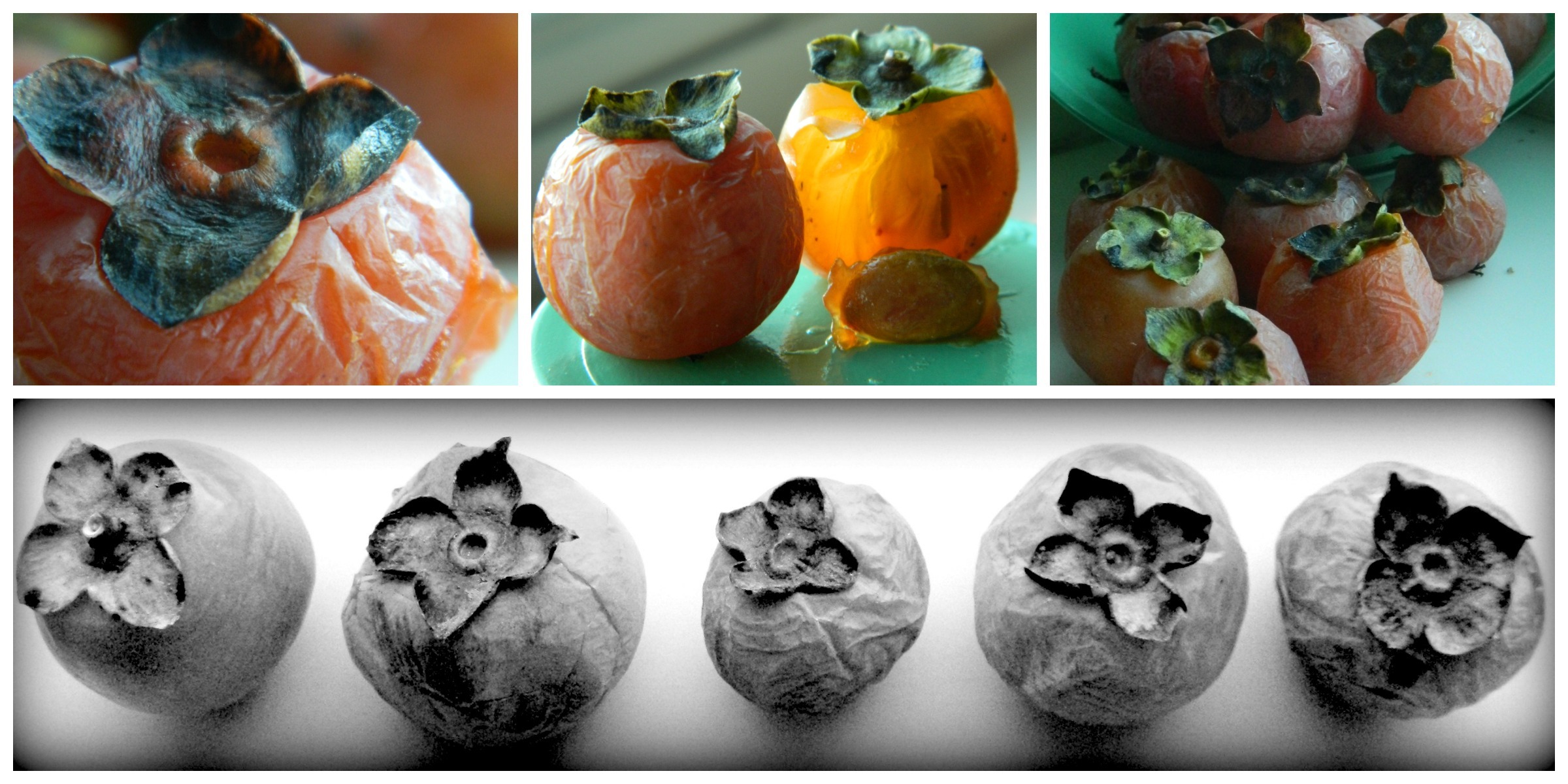American Persimmon : Weather Predictions, Cold Uteri and Tigers: Japanese and American Persimmon folklore
The Japanese persimmon (D. kaki) has been cultivated in Asia for over 3000 years, allowing ample time for folklore and myths to develop among its people. As mentioned in the introduction, a mixture of crab and persimmon was considered extremely poisonous by Daoist wisdom (Encyclopedia of religion). Interestingly, traditional Japanese beliefs also cite Persimmons as a risk during pregnancy. Pregnant women are warned that consumption of persimmons could make the uterus “cold” and lead to a miscarriage.
A common Korean folk story named “The Tiger and the Persimmon” again alludes to the shocking astringent quality of persimmons. In the high mountains of a remote village, a mother attempts to quiet her inconsolable baby as a tiger approaches to eat the baby. The mother first threatens that a bear or fox will come to eat the baby if it doesn’t stop crying, but nothing can cajole him to quiet. She then announces a tiger is approaching, but the baby finds no fear in the ordeal. Finally, just as the tiger is about to pounce, the mother yells “Look, it’s a kkotgam (persimmon)!” and the baby immediately becomes silent. Intimidated by the “horrible monster” that the persimmon must be in order for it to quiet the baby, the tiger leaves the house. Though the story provides no true explanation for the baby’s silence, perhaps the astringent, mouth-puckering quality of unripe persimmons was enough to quiet an otherwise inconsolable baby.
To read the entire story, click here:
http://www.sejongsociety.org/korean_theme/korean_folk_tales/tiger_and_persimmon.html
While the American Persimmon (D. virginiana) does not have such a detailed written history compared to the Japanese persimmon, it has still managed to permeate American folklore. Because of the American persimmon’s ability to grow almost anywhere in the contiguous United States, the tree and its fruits have integrated into local culture, including the central US region of the Ozarks. According to Ozark folklore, the shape of Persimmon seeds can actually predict the severity of winter in the area. Patrick Bryers, a horticulture specialist at the University of Missouri, reports that a spoon-shaped seed indicates a higher than average snowfall for winter, a knife shape signals colder than average temperatures, and a fork shape indicates warmer than average winters. There is no consensus about the accuracy of this prediction method, but countless blogs cite Persimmon seed predictions as an annual fun tradition shared among family and friends.

